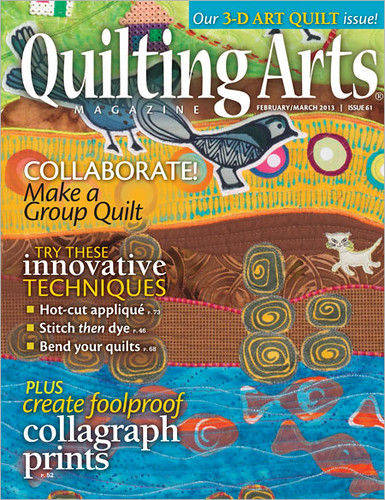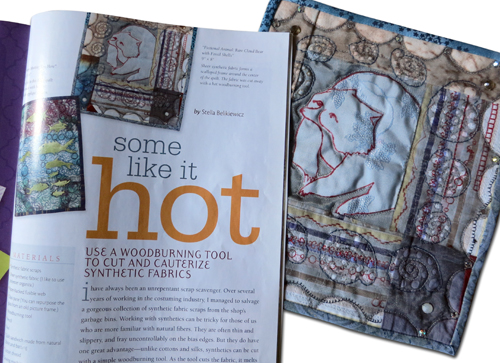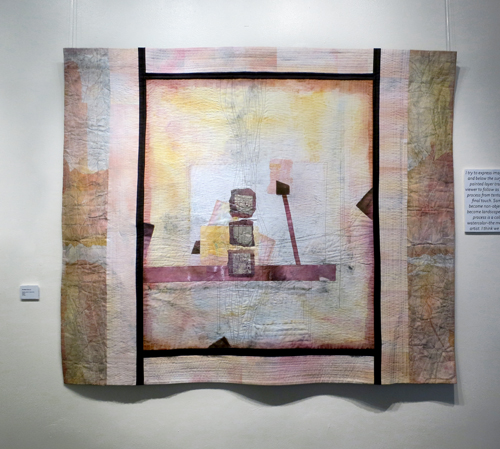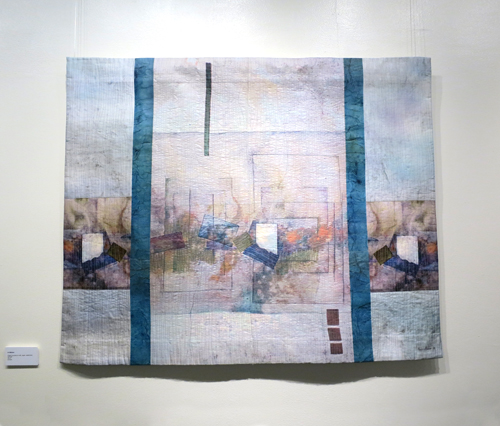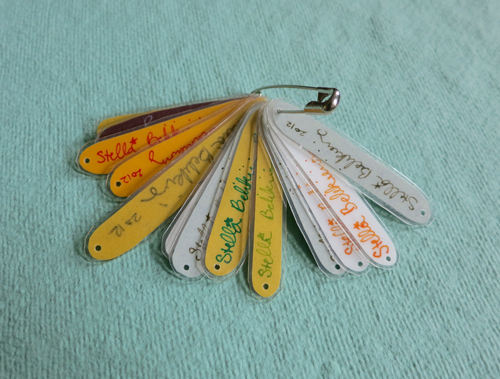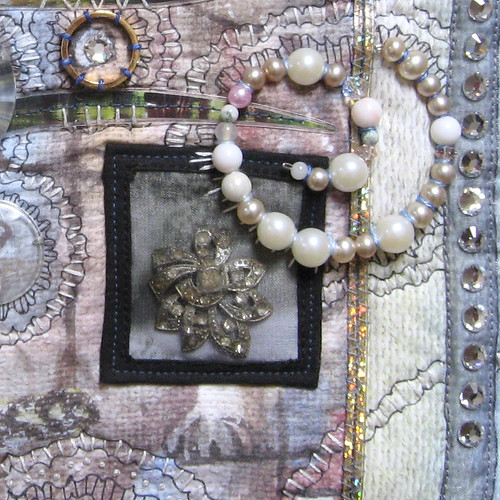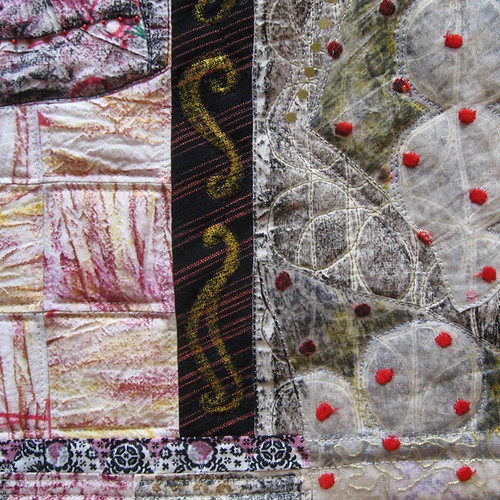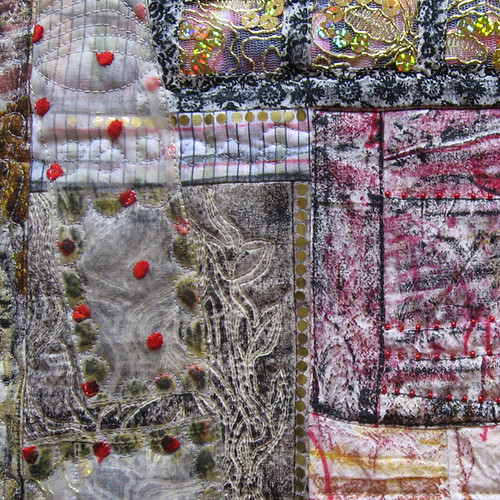Martha Ressler is an artist I have known for several years, and I am a fan of her gorgeous quilts, paintings and fabric collages, as well as of her inspiring approach to her own artistic career. So I definitely knew as soon as I began my "Artist Interviews" series, she would have to be included!
Martha's work can be seen on
her website, and you can also follow her various doings
over on her blog.
Now, on to the interview!
 |
| "Crossing the Tracks" by Martha Ressler |
Describe Your Workspace - is it in your living space or separate? Do you have a preference one way or the other? Is there anything your setup doesn't allow?
My Studio is outside my home, on the third floor of a commercial building on the main street in Lawrenceville, an old but “becoming trendy” section of Pittsburgh. It is spacious at about 500 square feet. When I go there I can focus on making art without the distractions of home: cooking, laundry, the computer, TV, etc. The drawback is the expense. Even at the reasonable price of just over $400 a month, having a studio necessitates earning at least that much in sales every month. Which doesn’t even count materials costs, and definitely doesn’t include living expenses! (I work full time and that plus art sales more or less works out OK.)
The thing my set-up doesn’t allow is fabric dyeing. I am not greatly attracted to dyeing, but if I were, I would have a hard time, as water access is one floor down via a kitchen sink and small bathroom sink. I promised the landlord I wouldn’t do messy dyeing there!
Do you incorporate any materials or techniques into your art that are not normally thought of as art supplies? What about these items makes them appeal to you personally? How do you use them, and how did you discover this unexpected artistic use?
These would be my found objects. I backed into using them. First I incorporated various buttons and bits of jewelry that I’d collected. Then when I wanted a rougher look, I began using bits of rusty metal that I found in the neighborhood. I began expanding the found objects to include bits of paper, like discarded lottery cards, plastics, Dorito bags and candy wrappers. These are things that actual people have used, touched and discarded. I like the idea of including them in my art in unexpected ways. I feel like I’m weaving together the past, present and future.
 |
| "Walkabout" by Martha Ressler |
Have you ever decided your work needed to change in a way that involved having to re-think the way you "always do" some aspect of your process?
The change from oil painting to fabric collage was a wrenching one. At first I didn’t realize the implications of taking up a new medium. In order to display a consistent body of work in shows and galleries, I had to choose one or the other. I had not proceeded with painting far enough to be really confident and good at it, yet before I had a chance to do that, fabric called to me. I heeded the call. I think it is possible that I may return to painting in the future.
 |
| "Forging Wheels" (fabric) by Martha Ressler |
 |
| "Forging Wheels" (oil on panel) by Martha Ressler |
Do you have any concrete advice about how to do away with artist's block?
I usually know what I want to accomplish when I enter my studio, but occasionally I have no idea. In that case I start sorting my stash and cleaning up and looking through pieces I have put aside. Before long I have an idea. My advice is to always go to the studio (every day). Do not wait for inspiration to strike, but show up for work anyway. I also find inspiration when I walk. I walk 10,000 steps a day, and often the solution to some problem will come to me as I move, breath, and look around.
 |
| "A Glance at the Past" by Martha Ressler |
Is there a piece you'll (probably) never sell? What is it, and why is it going to be staying with you?
There is one that is very dear to me that I know I will never sell because it is NFS. After my mother died, I was left with a box of old photos, mostly black and whites from the 30’s, 40’s and 50’s. These were “rejects” that hadn’t made it into her well-organized photo albums. I finally decided to cut them up in ½ inch squares and collage them into a portrait of her. The promising young woman dissolves into bits which equate to the reality of her life as an artist and mother.
 |
| "A Life Pixelated" by Martha Ressler |
You live in Pittsburgh. What opportunities exist locally for fiber artists? What about the character of your city do you find particularly inspirational? Are there any local organizations or groups you'd like to mention so they can get more exposure?
Vital to the Pittsburgh fiber art scene is the
Fiberarts Guild of Pittsburgh. This is a wonderful group of artists who support each other in so many ways. I am also very involved with the
Pittsburgh Society of Artists (I am finishing up my second term as president). I get much inspiration by also being a member of a multi-media group. As far as the city of Pittsburgh goes, it is important to the way I work now. The grittiness of it is my muse, as well as its rich history.
